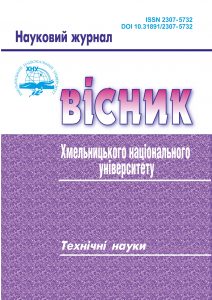A THREE-TIERED APPROACH TO THE INITIAL STAGES OF DESIGN OF COLLABORATIVE ROBOTIC TECHNOLOGIES
DOI:
https://doi.org/10.31891/2307-5732-2023-323-4-180-187Keywords:
industrial robot, collaborative robotics, automation, safetyAbstract
Modern automated production facilities widely use industrial robots (IRs), which have proven to be reliable, productive and efficient technological equipment. However, there are cases when the use of industrial robots is impossible or dangerous, which leads to the use of human labour. Due to the continuous development of microprocessor technology, hardware components and software, a new type of industrial robots has emerged, namely collaborative industrial robots (CIRs). The distinctive feature of CIRs from IRs is the functional ability to respond and interact with people, and thus perform joint technological operations. Despite a number of advantages of CIRs over IRs, there are problematic issues related to insufficient developments in the theoretical foundations of technological training of collaborative robotic technologies (CRTs) in production facilities that involve systematic and complexity. The above emphasises the lack of unified approaches to technological training of CRT, namely, the issues of distribution of tasks between humans and CIR in CRT, as well as the lack of approaches to determining the feasibility of using CRT in general. The above emphasises the lack of unified approaches to the technological preparation of CRT. This article highlights the proposed three-tiered approach to the implementation of the initial stages of CRT design, which comprehensively and systematically takes into account the essence of collaborative technologies and CIR. This approach systematically and comprehensively considers and resolves the issues of the possibility of using CRT in production, the distribution of tasks between humans and CIRs, and the definition of the type of human-CIR interaction. The proposed approach to systematic technological decision-making in solving the above problems as a problem of fuzzy multicriteria optimisation, which is solved with the integrated use of analytic hierarchy process (AHP) and fuzzy multicriteria selection of alternatives (FMSA) methods, is highlighted. An analysis of the available information sources on research and peculiarities of application of CIR in production is carried out, which indicates the relevance, importance and prospects for further development of collaborative robotics.

